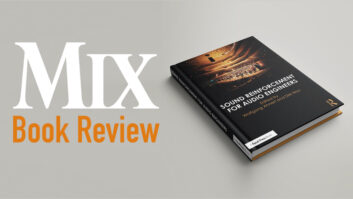There’s a mystique and seductive aura that surrounds the idea of Creativity. As a culture, we worship the creative impulse. New research shows only 39 percent of people worldwide consider themselves creative, yet 8 in 10 feel that unlocking creativity is critical to the economy. Creativity’s sway reaches far beyond money, however, because deeply creative efforts affect, move, touch and—hopefully—inspire us on every level of our being.

The rub, however, is that sparks of ingenuity are frustratingly elusive and ethereal. We can admire a gorgeous painting, and even watch it get painted if we’re lucky, but it is impossible to experience the painter’s personal flash of inspiration that drives him to put a color on canvas just so.
Nonetheless, art that moves us inevitably drives us to search for deeper understanding of its creation. Everyone wants to somehow reach out and touch the intangible—experience how something beautiful was created out of nothingness, brought to life through a simple pluck of a string or the tap of a keyboard. We have entire museums like the Rock n Roll Hall of Fame in Cleveland, or even just the Hard Rock Café, where people convene to see the instruments that brought their favorite songs to life, staring at them as if hoping to unlock a clue—as if that piano, placed under your hands, would suddenly bestow another “Hey Jude” or “Great Balls of Fire” upon the world.
That notion is silliness, of course, and by and large we recognize that, but the fetishization of artistic tools inadvertently serves to undermine the creative works that surround us every day—ones that we take for granted without the slightest thought. Creativity is in fact found everywhere, from the names of stores down the block, to the ads on this website. Andy Warhol famously founded the Pop Art movement out of finding deeper meaning (or not) in the packaging of everyday items.
On some level, shouldn’t that art deserve its own fetishization? A TV news theme we’ve heard a thousand times is arguably more deeply enmeshed in our lives than the songs that we more readily define as art, and yet we don’t value it on the same level. If all art has value, then it’s fair to say that we should—or at least could—find the guitar used to write a CNN theme just as fascinating as the one used to write “Welcome To The Jungle.”
And if that notion seems unlikely, then you may want to page through A Story of Six Strings, a new book by Stephen Arnold. If you do a search for him here on the PSN site, you’ll find his name popping up time and time again, always in stories about his company, Steven Arnold Music, which has created signature news themes that you’ve heard a million times on CNN, ABC News, CBS, The Weather Channel, ESPN, HBO, Fox and others, as well as countless jingles for McDonalds, Honda and the like.

The book itself is filled with intriguing stories and photos of Arnold’s wide-ranging collection of classic guitars, with each instrument portrayed against landscapes across America. A 1950 Martin D-28 that he used to write music for CNN’s “Ten Years Later” reports on 9/11 is photographed at Ground Zero. A 2001 custom Martin cut-away that he used to create countless CNN themes is shot leaning against a commentator couch. A 1969 Fender Strat bought in New Orleans a month before Hurricane Katrina—ironically used to create The Weather Channel’s Storm Alert theme—sits under ominous skies. There’s dozens more to be found within these pages.

For guitar collectors, there’s plenty of eye-candy, like harp guitars or an 1854 Schmidt & Maul Slot Head guitar, photographed at the seedy New York City building where it was created over 150 years earlier. For less esoteric music fans, there’s the tales of how Arnold wound up with guitars signed and/or played by the likes of James Taylor, B.B. King, Paul Stanley, Roger McGuinn and others.
The visual parade of Arnold’s guitars, lavishly photographed by Chris Fritchie, provides an opportunity to not only see and appreciate—and perhaps fetishize—the tools behind music we hear every day, but to also see them taken out of the common contexts of the stage and studio. By seeing the instruments, always photographed unplayed and monolithic within the surroundings of everyday life, the ubiquity of the music they’ve created comes full circle as we see the tools themselves become part of the environment, providing a new way to look at these creative vessels, and perhaps a different glimpse of creativity itself.







